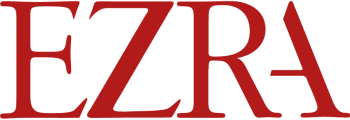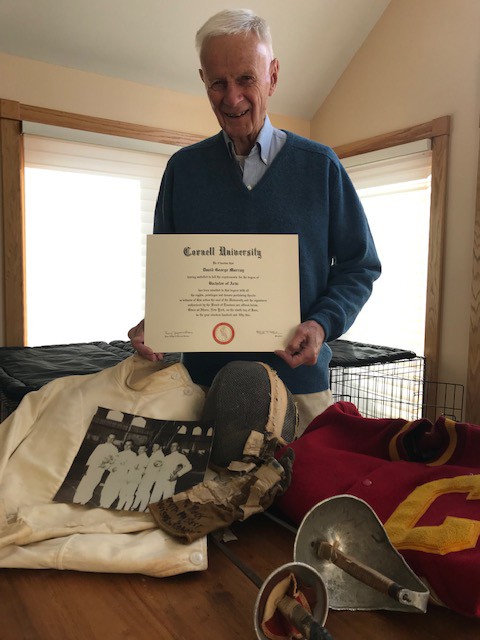Doctor receives Cornell degree, 67 years after leaving campus
By Kathy Hovis
When Dr. David Murray ’52 finally held his Cornell diploma in his hands earlier this month, his wife, Judy Sayles, said he raised one hand to heaven.
His mother would have been so happy.
Murray – a biology/pre-med major – was so anxious to get to medical school to pursue his goal of becoming an orthopedic surgeon that he took summer school courses at Iowa State University in Ames, Iowa (his hometown) in the summer of 1950, with the hope of being able to satisfy Cornell’s degree requirements in three years.
By the time Murray learned that Cornell would not accept his summer school credits, he had already been accepted by nine medical schools for the fall of 1951 and had already committed to attend the Washington University in St. Louis School of Medicine.
“Because it was a done deal with medical school, I went ahead,” Murray said. “My mother was very upset that I would not have a bachelor’s degree from Cornell.”
The notion of finishing his Cornell degree was put aside because of his busy life as a medical student, and then as a young doctor, husband and father.
But the idea re-emerged a few years ago, when Murray’s niece, Dr. Lisa Sayles Hogenkamp ’90, took up the cause. Hogenkamp and Sayles worked with their contacts in Cornell’s Alumni Affairs and Development offices to contact the Office of the University Registrar to see if they could help secure the missing diploma.
“Cornell told us they would need a transcript from Iowa State, and I thought, ‘How would they still have those records? It’s not like they were computerized,’” Sayles said. But Iowa State did have the records, which they quickly sent to Cornell.
Sayles and Hogenkamp then secured a transcript from Washington University and, combined, they met the missing requirements.
“Plodding through the 1948-49 Courses of Study catalog verified that Murray was extremely close to satisfying all undergraduate degree requirements at Cornell,” said Melanie Holland Bell, director of administration for the College of Arts and Sciences. “It was extremely gratifying to receive transcripts that verified that all requirements had been satisfied by the spring of 1952.”
With the help of the Office of the University Registrar, Cornell was able to grant Murray’s degree before the end of the Fall 2018 semester.
Cassie Dembosky was the university’s registrar at the time – she retired Dec. 21 – so she made it a priority to send Murray his diploma before the holidays, and before her retirement.
“This was truly a team effort and I think everyone in the Office of the University Registrar was excited and happy to be involved,” she said.
“It was a little hard to believe and a little bit of a circuitous way to get a degree,” Murray said.
Sayles said the look on Murray’s face when the diploma was unwrapped was priceless.
“It was a very touching moment, not only because it would make his mother happy, but it also makes him happy because of how absolutely valuable his education at Cornell has been for him, the friends he made and the experiences he had,” Sayles said. “It was an important part of his life.”
At Cornell, Murray was part of the rowing and fencing teams and president of the Phi Sigma Kappa fraternity.
After graduating from medical school in 1955, he completed a surgical internship at Vancouver General Hospital in 1956. After service in the U.S. Navy as a lieutenant, during which he participated in Operation Deep Freeze II in the Antarctic, Murray resumed general surgery training at SUNY Upstate from 1958-59 and completed residency training in orthopedic surgery at the State University of Iowa at Iowa City in 1962. He joined the SUNY Upstate faculty in 1962 and was promoted to professor in 1969. He was named chair of the department in 1966, a position he held for 30 years.
Murray brought distinction to SUNY Upstate by building its orthopedic surgery department and graduating more than 120 orthopedic surgeons from its residency program.
As a physician-scientist, Murray is recognized for his research on general bone physiology, the use of electrical current to promote bone remodeling and healing, respiratory insufficiencies resulting from fat embolism during surgery, and total joint replacement procedures. Murray designed, developed and patented the variable-axis knee prosthesis, which for many years was referred to as the “Syracuse knee.”
He went onto become the president of the American Academy of Orthopedic Surgeons, and subsequently, the American College of Surgeons.
Media Contact
Get Cornell news delivered right to your inbox.
Subscribe


